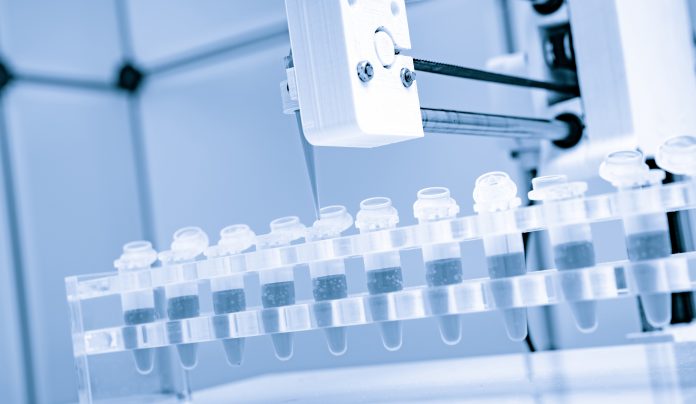Dr Jen Vanderhoven, Director, National Horizons Centre, Teesside University, sheds some light on how the gene therapy field can progress in the face of funding challenges and skills shortages
The first successful gene therapy trial was performed in 1990, to treat severe combined immunodeficiency (SCID), an extremely rare genetic disorder that typically affects one in 35,000 infants in the UK. It reversed the condition in a four-year-old girl.
Gene therapy, in the simplest terms, is the process of delivering genetic material into cells, to account for an abnormality that has given rise to a particular genetic condition. This is delivered through a vector, a modified virus which ‘infects’ the cell to integrate the genetic material.
It is considered one of the most important emerging fields within advanced therapies, given what it represents for those with life-threatening conditions. Rather than simply treating the symptoms of genetic disorders, it can completely cure them.
Over the last thirty years, the field has made significant progress – but perhaps not on the scale you would expect. Whilst there have been thousands of gene therapies trialled, as of 2019, approximately 20 were approved for use – and only 11 within Europe.
A costly cure
The goal needs to be bring the cost of gene therapies down to the level of small molecules.
Currently, it is incredibly expensive, costing anywhere from hundreds of thousands of dollars for a single dose, all the way into the millions for certain products, for example, Zolgensma, which treats spinal muscular atrophy and costs £1.78 million for one dose. The fact is that the prices have not come down for biologics (Ref), which have recorded blockbuster sales e.g., Humira, a monoclonal antibody to treat rheumatoid arthritis, still costs around £20,000 per annum per person even after patent expires.(1)
It is in part a reflection of the sheer cost of bringing these therapies to fruition. It is incredibly expensive, costing anywhere from hundreds of thousands of dollars for a single dose, all the way into the millions for certain products, for example, Zolgensma, which treats spinal muscular atrophy and costs £1.78 million for one dose. Compare this to a monoclonal antibody, for example, to treat inflammatory disorders and cancers, or Humira to treat rheumatoid arthritis, costs around £20,000 per annum per person, and you can start to see the barriers that might be preventing wider exploration of gene therapies.
Gene therapy is also highly individualised, tailored towards specific people. Trials typically take place on a limited number of patients, simply because there is only a small pool of people to select from with particular disorders. The specialised nature of the conditions being researched, combined with the cost it takes to develop and trial products, means gene therapies are often extremely expensive to fund. What is more, many gene therapy products have, to date, been borne from academic research, which can sometimes prove less well-equipped to scale up treatments as compared to industry.
Large pharmaceutical developers and manufacturers, who have greater access to funding, are better able to bring gene therapy products to market and introduce them into wider use. However, it could prove difficult to incentivise a pharma giant to invest in an experimental new therapy that is expensive to fund and only has a small pool of patients it can apply to.
A growing skills gap?
Another pressure facing the field of gene therapy, particularly within the UK, is access to training, talent and a skilled workforce. Even over thirty years in, it is very much an emerging field. The Cell and Gene Therapy Catapult, an independent body established by the government to advance the UK’s expertise and commercialisation within the industry, produced a report in 2019 that pointed to a potentially stark skills gap in future years.
Though the report recognised there had been some skills growth within the field since 2017, it forecasted a steep rise in demand for bioprocessing roles specific to gene therapy by 2024, particularly within the manufacturing, development and quality control of products. Catapult’s research also noted that a lack of skilled people could slow the country’s progress within the field, causing the UK to fall behind regarding organic and inward investment for its cell and gene therapy capabilities. This would perpetuate a cycle of lack of investment, lack of talent, lack of skills, lack of progress, lack of therapies.
As a response to this the UK Government has heavily backed and funded the Advanced Therapies Skills Training Network (ATSTN) and invested in National Training Centres as part of this.
Breaking barriers and learnings from the vaccine race
One of the reasons gene therapy is currently expensive in terms of research and resource is a lack of a standardised platform to create effective products through. Currently, it is not possible to guarantee that the delivery vector will target the right cell, or that the body will respond as it should. In some previous trials, it has created unwanted immune system reactions, when the vector is detected as a threat or has led to side effects when the ‘wrong’ cells are targeted.
The delivery method represents one of the key research priorities for the field. We need to develop a robust delivery mechanism, so the genetic material can be imparted within the right cells. Once this is standardised and proven to be safe, it will become a lot simpler to develop reliable therapies, in turn bringing R&D, regulatory and commercialisation costs down.
We could also take learnings from the COVID-19 vaccine race, and apply them to cell and gene therapy development. Up until 2020, it was unheard of for a vaccine to be researched, created, trialled and delivered in under a year. And yet, when the global need was there, we had vaccines ready to go within ten months. If we had this impetus for gene therapy, imagine where the field could go.
How were we able to receive a reliable vaccine so quickly? In part, it was through a huge influx of funding and a focus on bringing academia and industry to work together (for example, Oxford University and AstraZeneca).
Bringing education and industry together
When we consider the skills gap in gene therapy, alongside the expensive nature of the work, industry partnerships will prove key to commercialising and scaling up gene therapies. Catapult currently provides excellent support in connecting higher education with industry.
Symbiotic relationships between academia and industry will be incredibly important to push forward the field; universities can provide the facilities, education and training to upskill the workforce, and manufacturers in turn provide talent and funding to create, trial and manufacture life-changing therapies.
There is huge potential within gene therapies to revolutionise how we approach incredibly difficult genetic conditions. Through access to funding and a healthy pipeline of talent, there is no doubt we could ensure the longevity of the field within the UK and deliver products that change people’s lives.
1. Akram, Muhammad Safwan, et al. “Challenges for biosimilars: focus on rheumatoid arthritis.” Critical Reviews in Biotechnology 41.1 (2021): 121-153.
More on Gene Therapy:
The European Medicines Agency
As we can see from the above information, gene therapy is still an emerging field, and thus must be regulated with clear and precise regulations. The European Medicines Agency (EMA) is a decentralised agency of the European Union responsible for the scientific evaluation, supervision and safety monitoring of medicines within the EU.
As a networking organisation, EMA involves thousands of experts from across Europe every day as part of their scientific committees. EMA develops scientific guidelines to help pharmaceutical companies and individuals to prepare marketing-authorisation applications for human medicines.
The European Medicines Agency’s scientific guidelines on gene therapy help medicine developers by providing guidance on the structure and data requirements for a clinical trial application for exploratory and confirmatory trials. Scientific knowledge on gene and cell-based therapy products is rapidly expanding, and to ensure that reliable data are generated on these complex products, well-conducted clinical trials are essential to determining their benefit-risk profile.
The current overarching guidelines for human gene therapy is the guideline on the quality, non-clinical and clinical aspects of gene therapy medicinal products. These guidelines span all areas of development, with some directed to the marketing authorisation stage, whereas others also include guidance related to earlier stages of development.















